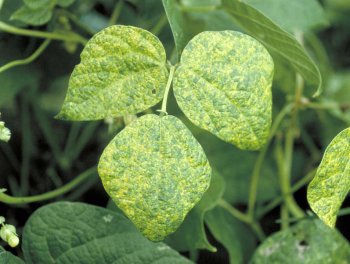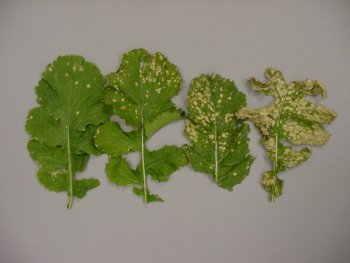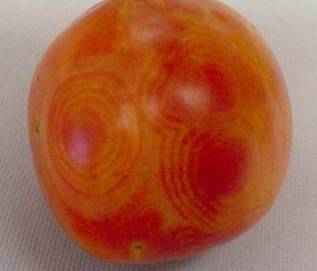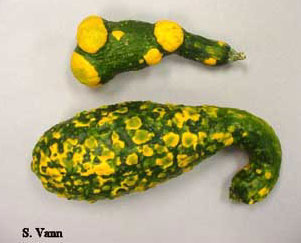Common Vegetable Diseases
Biotic diseases of vegetables result from infection by a living organism such as a fungus, bacteria, virus, or nematode. A susceptible plant, favorable environment, and a plant disease causal agent (pathogen) must be present over a period of time for a disease to occur.
Most biotic or infectious diseases of vegetables are caused by some kind of a fungus.
Some diseases of vegetables are specific to a particular crop, whereas others may attack multiple vegetable crops. There are several important virus diseases of vegetables. Many viruses are transmitted by a variety of insects. Based on that information, insect management can impact the incidence and severity of several virus diseases.
Nematodes can often be a problem on vegetables that are grown in sandy soil conditions. These worm-like pathogens feed on the roots of our vegetables.
Abiotic diseases (non-infectious) result from a stress imposed by non-living agents such as adverse environmental growing conditions. These factors include such things as temperature and moisture extremes, nutrient deficiencies and toxicities, and damage from crop production steps.
More than 50% of all vegetable problems are related to an unfavorable environment.
Vegetables that become stressed from environmental extremes are more vulnerable to the biotic diseases. Because of this fact, growers should focus their attention to providing all of the necessary environmental components to promote plant vigor, rather than relying exclusively on chemical disease management.
Significant Biotic (Infectious) Diseases
Fusarium Wilt
Caused by a fungus that can live in the soil for extended time periods. This fungus attacks the roots and can "plug" the food and water transport stream. Different "races" of the fungus exist. Growing resistant varieties is the best method of management. Internal reddish-brown discoloration of the stem is diagnostic. Entire plants can be killed.
Southern Blight
Caused by a soil-borne fungus. Plants are attacked at the root collar. Plants wilt and die.
Pythium Blight
Caused by a fungus that attacks the lower stem and roots. Often associated with poorly drained soils.
Root-knot
Caused by a nematode. These animals feed on the roots causing them to be debilitated. Growing resistant varieties can be effective in management.
Bacterial Spot
Caused by a bacteria. Affects the leaves and fruit. This bacterium can be seed-borne. Spreads from plant to plant by splashing water.
Anthracnose
Caused by a fungus. Affects the leaves and fruit.
Mosaic Viruses
Various diseases. Symptoms variable from "bumps" to color blotches to leaf and fruit deformities. Many are insect transmitted. Some can be seedborne. Viruses can overwinter in weeds and other plants.
Gummy Stem Blight
Caused by a fungus. Cucurbits primarily impacted by this disease. Causes a fruit rot and stem/leaf lesions. Entire plants can be killed.
Powdery Mildew
Caused by a fungus. Produces white "fuzzy" patches of mold like growth on the leaves. This fungus can be seedborne. Germination of spores are favored by humid conditions.
White Leaf Spot
This is a minor foliar disease of brassicas caused by a fungus. Produces circular spots up to ¼ in diameter. Spots are gray to gray green in color. Commonly infected plants include; turnips, mustards, and Chinese cabbage.
Abiotic (Non-infectious) Diseases
Blossom End Rot (BER)
Caused by a calcium imbalance. Often produces a necrotic area on the blossom end. Affects peppers, tomatoes, and cucurbits.
Tip Burn/Blackheart
Caused by insufficient calcium. Lettuce and celery often impacted by this abiotic disease.
Publications
-
MP154 - Arkansas Plant Disease Products Guide
Current product information and management options for plant diseases in Arkansas
- Managing Tomato Diseases in Arkansas
Fact sheet on common tomato diseases and disorders and their management



